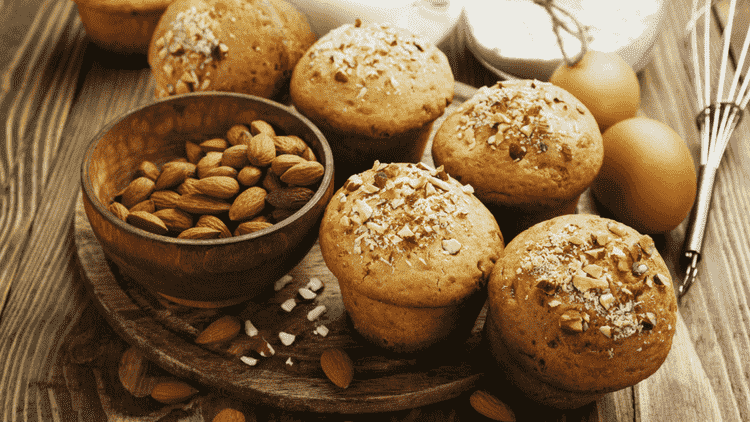Don’t you think it’s weird that, considering how much time most of us spend trying to build muscle, hardly any of us actually know what muscle is? If you’re interested in finding out, this article looks at exactly what a muscle is, how it’s built, and the specific mechanisms used to stimulate muscle growth in the gym.
What is muscle?
Muscle is made up of muscle fiber bundles. Each of these bundles contains muscle fibers, and each of these muscle fibers contains numerous myofibrils. If you want to dig down even deeper, these myofibrils are made up myofilaments – specifically, actin and myosin. According to sliding filament theory, it is the sliding movement of these filaments that allows a muscle to contract.
If this is all getting a bit hard to imagine, here’s a handy diagram that shows you what I mean.
You might also be interested to know that there are different types of muscle fibers, which can be loosely categorized as fast twitch A, fast twitch B, and slow twitch.
Fast twitch (type 2B) fibers are all about fast, explosive movements. These generate huge amounts of power but fatigue quickly. If you’re an Olympic weightlifter, shot-putter, or sprinter, then you probably have a lot of these fibers.
Fast twitch (type 2A) fibers are still explosive, high-activity fibers, but they have a bit more endurance. This is the type of fiber used for activities like bodybuilding, where sets of 8–15 reps take place.
Slow twitch (type 1) fibers are all about endurance. These are used for activities like running, swimming, and cycling.
Over time, performing certain types of exercise will lead to the development of more types of the corresponding fiber.
How is muscle built?
We have 650 skeletal muscles in our bodies, all of which develop naturally as we grow, provided we have adequate access to growth resources (i.e. food) and are not malnourished.
In essence, our bodies constantly break down muscle, and constantly rebuild it using amino acids derived from protein. For all you science-lovers out there, the terms for this process are muscle protein breakdown and muscle protein synthesis. When synthesis is greater than breakdown, new myofibrils are formed and a muscle “grows.” Our bodies always adapt to imposed demand, so each of us develops a set of muscles capable of performing basic tasks like standing, walking, running, bending, etc.
However, as health and fitness enthusiasts, we’re not simply interested in the basic level of muscle growth. We’re looking to increase the size and strength of our muscles beyond normal levels, and to do this we have to impose greater demands on our bodies in order to force a greater adaption. This adaption means an increase in the thickness of myofibrils, and in the number of them, too.
5 Winter Cardio Exercises Without A Gym >>
How do we stimulate muscle growth in the gym?
Research into muscle growth is ongoing, and it’s pretty complex, but so far there are three main things that we know contribute to muscle growth.
1. Muscle tension
Not to be confused with time under tension (which is something different), muscle tension is all about the application of stress to your muscles. We do this by using progressively heavier weights over time. The one and only Dr Brad Schoenfeld, who has a PhD in hypertrophy, tells us that increasing muscle tension actually changes the chemistry of the muscle itself, allowing for mTOR and Satellite Cell Activation. Don’t worry, I don’t expect you to know what all that means, and we won’t be able to cover it all in this article, but he has published a study on the topic.
2. Metabolic stress
Also known as “the pump” or “the burn” to anyone familiar with the gym environment, this feeling is actually the build-up of hydrogen ions in the muscle due to oxygen debt. This type of training has been show to lead to glycogen build-up in the muscles, which leads to growth. For clarity, this is often referred to as “sarcoplasmic” hypertrophy, as you’re increasing the size of your muscles without creating more myofibrils.
3. Muscle damage
Linked to both tension and stress, muscle damage refers to the process by which immune system cells and inflammatory molecules are released, signalling satellite cell activation.
It’s worth noting that you don’t have to be ridiculously sore or have DOMS (delayed onset muscle soreness) for days in order to achieve muscle damage. All you need to do is to provide a stimulus that your body can recognize and then adapt to.
Could these four nutrient deficiencies be hindering your weight loss? >>
Muscle and its relation to body fat levels
When I tell people that building muscle is one of the best ways to reduce body fat in the long term, they often look confused. In most people’s minds, adding muscle means adding size and weight, so how can it possibly lead to less fat?
Well, it’s actually pretty simple. Bigger, heavier organisms require more calories per day in order to maintain their size. To use an example, let’s say our friend John weighs 70kg and requires 2500kcal per day in order to maintain that size. If John spends some time in the gym building muscle, he might now weigh 75–80kg and require 3000kcal to support his size. This new, more muscular John can eat 2700–2800kcal per day and still lose weight in the form of body fat.
It’s not just the size of the person, either; the actual make-up of that person is important. Muscle requires more calories than fat to maintain – more than double the calories, in fact. So a person weighing 80kg with very little muscle requires fewer calories per day than someone weighing the same amount but having more muscle.
Put simply, the more muscle you have, the more calories your body burns naturally every single day, and the easier it is to maintain a lower body fat level.
The science of gainz
Alright, if you’ve read this far, then you now know a lot more about muscle than you did before. We’ve covered the anatomy of a muscle, muscle fiber types, how muscle is built, how to stimulate growth in the gym, and even how muscle can reduce your body fat levels.
All that’s left now is to get to the gym and start putting all your new knowledge to use!
Pop quiz: How many different types of muscle fiber do we have?






